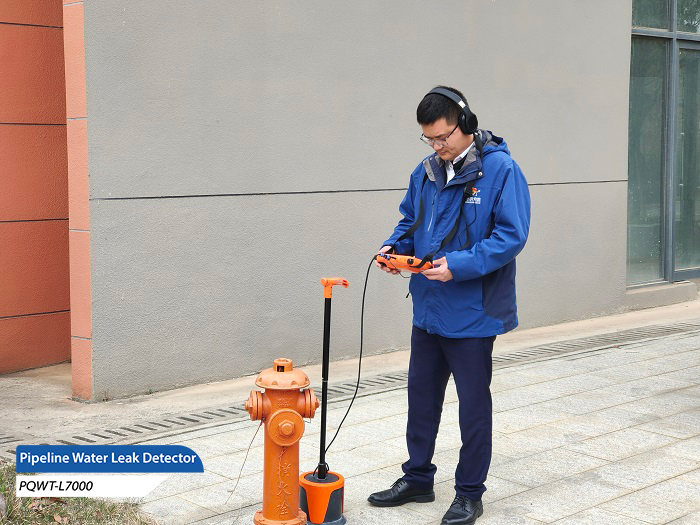In the modern urban water supply network, ensuring the integrity of water inlet pipes is the cornerstone of maintaining the safety and efficient utilization of urban water resources. Water inlet pipes, including hot water pipes, cold water pipes and floor heating pipes, are closely connected to the municipal water supply network, and any minor leakage may trigger a chain reaction, resulting in waste of resources and potential structural safety hazards. Therefore, it is especially critical to master the identification skills and efficient detection means of water inlet pipe leakage.

Early warning of water leakage
The leakage of water inlet pipe is often accompanied by some significant external signs, which provide clues for our initial judgment:
1. Wet changes in the wall and ceiling: the initial stage of the leak, the wall or ceiling may appear on a small area of water stains, with the passage of time, these watermarks gradually expand, the speed of change, the shape of the obvious, often heralding the continued leakage of the pipeline interior.
2. Fixed water points around the accumulation of water: under the sink, shower room floor or toilet, basin around the repeated accumulation of water, especially in the exclusion of normal water is still water residue, which is likely to be a direct manifestation of the leakage of water pipes.
Accurate detection: the intervention of the pipeline leak detector
When confronted with signs of a suspected water leak, the use of scientific detection methods is the only way to confirm and locate the leak. pipeline leak detector, as a representative of modern detection technology, plays a central role. Its workflow is roughly divided into the following steps:
1. Cut off the water supply: first of all, close the valves related to the suspected leakage pipeline, to ensure that the test environment is closed to avoid interference with the results of external factors.
2. Closure test: by connecting the pipeline leak detector, the pipeline system pressure test, so as to test the sealing performance of the entire circuit, for the subsequent leakage acoustic analysis to lay the foundation.
3. Acoustic positioning: pipeline leak detector utilizes its high sensitivity sensor to capture the acoustic signal generated by the pipeline leakage. When water leaks, water pressure forces the water to spray out from the broken place, and the sound waves generated by hitting the pipe wall or through the soil medium will propagate along the pipe or the ground in all directions. The instrument pinpoints the location of the leak by analyzing the difference in propagation time and intensity of these acoustic signals.
The Science Behind the Detector
The working principle of pipeline leak detector is based on the "acoustic propagation and analysis" technology, i.e. using the propagation characteristics of the sound vibration in the medium generated by the leakage point, capturing these weak signals through the sensors, amplifying and analyzing them, and finally presenting them to the operator in the form of graphs or numerical values to guide the Leak localization. This process is not limited to water, but also applies to other liquids or gases leakage pinpointing, showing its wide application potential.
In summary, the detection of water leakage in underground pipelines is not a simple task, but a comprehensive action relying on specialized knowledge and advanced instruments. By observing the signs of leakage and rationally applying pipeline leak detector for scientific detection, we can efficiently and accurately find and locate the leakage point, thus paving the way for subsequent repair work. As technology continues to advance, the accuracy and efficiency of leak detection will continue to improve, contributing to the healthy operation of urban infrastructure.








